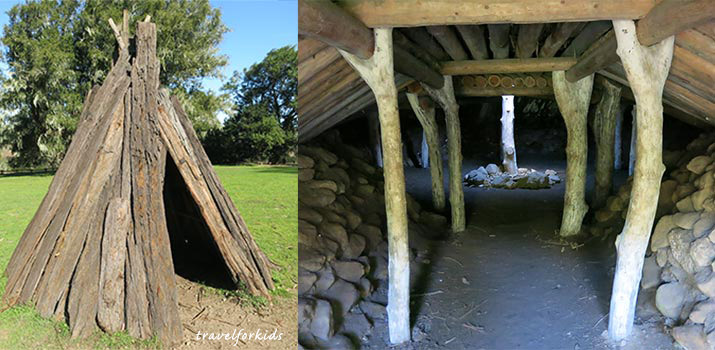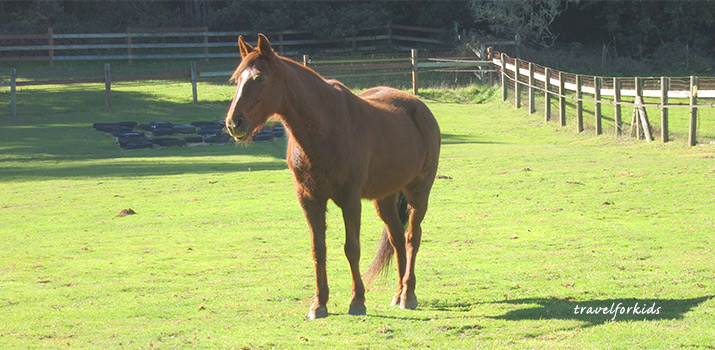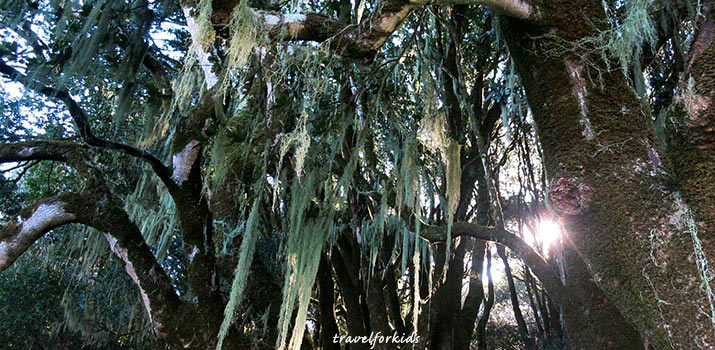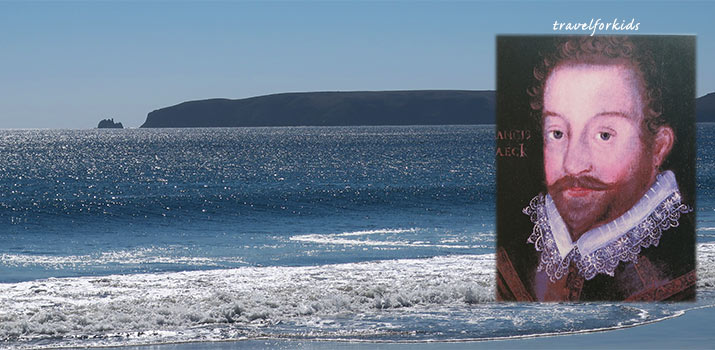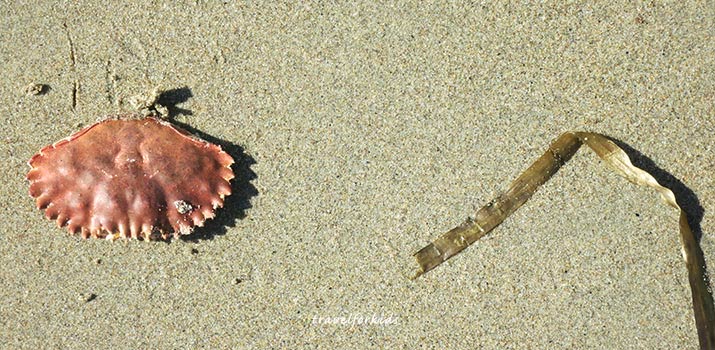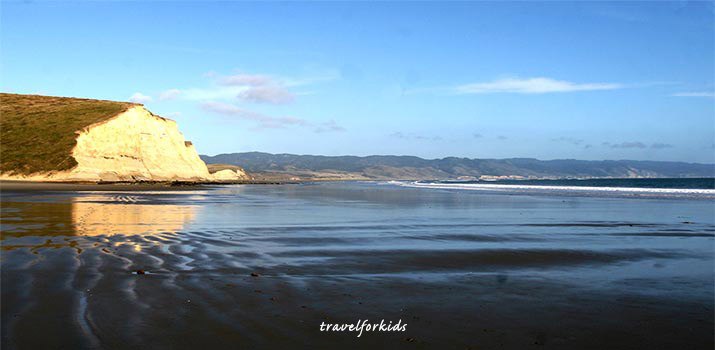
Spend a weekend at Point Reyes, a stunningly beautiful peninsula with long sandy beaches, rocky points, windswept headlands, forest dunes and lagoons, grasslands covered with wildflowers, a diversity of wildlife – Tule elk and elephant seals, sea lions.
Winter is often a good time to visit Point Reyes National Seashore, one hour north of San Francisco in Marin County. Days are cool, but often sunny.
Here’s suggestions for some favorite things to see and do with kids.
First stop, visit the Bear Valley Visitor Center, to pick up trail maps, find out about wildlife sightings of gray whales, elephant seals, and see exhibits about Point Reyes coast, marshes and forest habitats.
From the visitor center, follow Kule Loklo trail to a re-creation of a Coast Miwok Indian village. For centuries before the arrival of Europeans, the Miwok lived in the area. Kids will have fun popping into redwood bark “houses” (kotca) and family sweat lodge.
One of distinctive features of Point Reyes is the San Andreas Fault running right through Tomales Bay. The peninsula is situated on the Pacific Plate; on the east side of Tomales Bay is the North American Plate. Point Reyes is slowly scooting northwest.
Walking down Earthquake Trail, kids can see how far a fence “jumped” in the 1906 earthquake, and blue poles that show an active fault.
We couldn’t leave without taking a quick look at the Morgan horses in paddock behind the Visitor Center.
Because there are so few roads through the Point Reyes peninsula, the rangers use horses as a way to oversee the back country. At the Morgan Horse Farm, horses are trained for park service work and how to navigate the wilderness.
Stop at Inverness Park Market to pick up snacks of bagels, coffee, or sandwiches and cold drinks for a picnic lunch,
Take snacks or lunch to Heart’s Desire Beach, on Tomales Bay side of the peninsula.
This secluded sandy beach has picnic tables and restrooms. Surrounding trees are covered with spooky-looking lichen that’s called “old man’s beard,” many ducks and migrating birds float in the shallow water. In summer this beach is great place for kids to wade, swim, bring the sand toys.
Today we took Pierce Point Road, to Pierce Ranch, and parking for Tomales Point Trail.
Driving on the Pierce Point Road past historic cattle ranches, we arrived at Pierce Ranch and Tomales Point trail parking.
The Tomales Point trail follows the wide ridge backbone, high above the ocean below. Starting out, you’ll hear the sound of big breakers rolling onto the beaches. On the trail, look for different animal tracks, especially deer, which seemed to follow the trail. It’s always exhilarating to walk in a wide open world where the horizons are endless.
Tip: The trail passes through the Tule Elk Reserve. In September and October, come to see the majestic Tule elk. Two best places to spot the herds are White Gulch, and a pond about 45 min. north of Pierce Ranch.
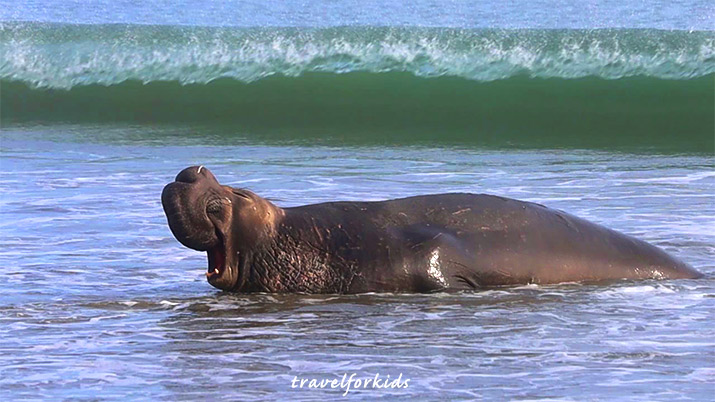
The next day, head out to Drakes Beach, to see Northern elephant seals hauled out on the beach.
From December to late February, elephant seals arrive, and here seal pups are born. After the pups are weaned, males and females mate, then depart, leaving the pups to figure out how to swim and catch food.
Close at hand, you’ll see bunches of seals lolling on the beach, some males in the water, pups nestling next to mom, seals tossing sand with their flippers (just like kids do at the beach). If the adult seals look like they’re just snoozing away a day on the sand, it’s their time to rest – elephant seals spend 90 percent of their time migrating thousands of miles in the open ocean.
There are picnic tables, visitor center, and restrooms.
In Drakes Beach visitor center are exhibits about Sir Francis Drake.
Look out to sea, and imagine Sir Francis Drake sailing into the nearby cover on his ship he Golden Hinde, in June 1579.
Two years earlier Drake embarked on a secret voyage to explore the Pacific Ocean (and also snatch any Spanish treasure galleons that came his way). Looking for a northwest passage, the shortcut across the continent, Drake sailed up the west coast of North America.
From descriptions of the landing site and contact with Native Americans during his month-long stay, the protected cove (Drakes Estero) was a perfect location to. He was also carrying 26 tons of silver, jewels and other goodies from Spanish treasure ships, and didn’t want to lose that!
And what a mariner he was – when Drake returned to England in 1580, his treasure was quite welcome, but most importantly Drake brought back detailed information about a voyage around the globe.
After picnic lunch, it’s time to explore Drakes Beach, but don’t get too close to the elephant seals.
Look for beach treasures, the receding tide reveals bright green seaweed and amazing chunks of rock formed millions of years ago, sometimes there are sand dollars, remains of giant kelp forests and crab shells on the sand. It’s always amazing at Point Reyes.
Tips for Point Reyes
In Point Reyes Station and Inverness are hotels, cafes, restaurants, market, everything you need for a weekend.
Saturdays in Point Reyes Station is the farmers market, June to November. Toby’s Community Park has a playground for little kids, restrooms. Stop in Point Reyes Books, stellar bookstore with great children’s books, non-fiction books about nature and the area.
In March and April, bring binoculars and look for gray whales at Chimney Rock and Point Reyes Lighthouse overlooks.
Weather can be sunny and warm, but also changeable. Bring sweaters and warm clothing.

